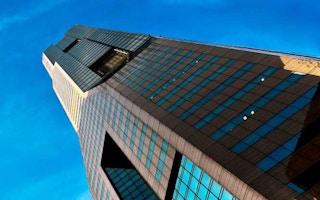No journalist likes to be hauled out of bed too early in the morning (since news often happens later in the day), but I was glad to be part of an early-morning discussion on the final day of the International Green Building Conference held on Friday, where a new buzzword for the industry had been coined: “retrovestment”.
The main takeaway from the two-hour discussion among key industry players was that retrofitting a building is no longer seen more as a cost but as an investment. Hence, it should be suitably called “retrovestment”, said BCA’s director Tan Tian Chong to laughter from the audience.
In the past five years of covering the local housing and environment beat, I had often asked Singapore’s building agency, the Building and Construction Authority (BCA), for numbers that proved the value of greening existing buildings. I finally got the answers when the Friday morning discussion featured National University of Singapore’s real estate department head, Professor Yu Shi Ming, who presented the findings of a joint study conducted by NUS and BCA together with six other real estate firms on the value of retrofitting existing buildings.
The study, with CB Richard Ellis, Chesterton Suntec, Colliers International, DTZ Tie Leung, Jones Lang LaSalle and Knight Frank, found that building owners stand to enjoy an average saving in operating expenses of 10 per cent if they retrofitted their buildings to higher standards. And this could enable the buildings to reap an increase in capital value of about two per cent.
The study, which sampled 23 commercial properties from office, retail, hotel and a mix of these uses, also found that:
- Retrofitting buildings to meet the standard BCA Green Mark certification can lead to a significant reduction in energy consumption. The average savings from the buildings sampled after retrofitting was about 17 per cent of the total building’s energy consumption compared to before retrofitting. If calculated by the area of the buildings where the owners are responsible for paying for the utilities, the average savings was even higher at nearly 30 per cent.
- This retrofit need not be costly. Expressed as a percentage of the current market value of the property, the cost was only 0.5 per cent for retail and 1 per cent for offices. There is also no significant disruption to both owners and users in their continuous occupation and operations.
The Green Mark scheme, launched in 2005, is BCA’s flagship certification scheme that rates buildings for environmental performance. It got off to a slow start, with a handful of buildings applying for certification in the first couple of years, but has since grown from strength to strength, certifying more than 840 buildings in Singapore and more than 120 in the region beyond Singapore’s shores.
BCA’s chairman, Mr Quek See Tiat, rightly noted that there is now greater awareness in the industry on the value of retrofitting buildings. The upfront costs can be recovered in about four to seven years, he said.
The challenge that remains, however, is to expand this retrofit exercise to buildings all across Singapore. The Republic has a target to green 80 per cent of its building stock to the basic Green Mark standard by 2030. Currently, it has achieved 12 per cent.
Chief executive of Australian property developer Lend Lease Asia, Rod Leaver, also presented interesting findings, where studies in Australia have measured the productivity gains of building users in greener buildings to be higher than those that are not.
Such benefits such as improved health and concentration used to be the intangible strengths of a green building but as the industry matures, and more rigorous studies are being done, these intangibles can increasingly be quantified.
“When companies start seeing a drop in the number of sick leave days that employees are taking, and a reduction in their health bills, that begins to make a really compelling case for only using green buildings,” noted Mr Leaver during the discussion. “If you’re building something that is not green, you’re building something that is obsolete right from day one,” he added.
It is encouraging that Singapore’s building industry is maturing and green buildings are becoming an integral part of the physical landscape. The value of green buildings is beginning to be reflected in the capital valuation of a building - a “dollars and cents” concept that every building owner understands.
That is why it is a step in the right direction that the real estate department at NUS have announced that it is developing a valuation guideline for green commercial properties that will take into account the cost and benefit of newly developed and retrofitted green commercial properties.
This new effort will be done in partnership with the six real estate firms and BCA. BCA also said it is working with the Singapore Institute of Surveyors and Valuers (SISV) to incorporate guidelines on green building valuation.
Key players in the audience also called on the regulators to consider more incentives such as that specifically for hotels, and tax breaks for building owners, to help the industry along.
BCA’s Mr Tan noted that two years ago, at a similar CEO breakfast talk, major developers had asked for extra gross floor area (GFA) as an incentive to build green buildings. Less than a year after, BCA launched a a GFA incentive scheme that precisely did that.
“All I would say, is at BCA, nothing is impossible,” said Mr Tan, to which the audience responded with cheers.
It is notable that BCA’s policymakers are not afraid to use policy tools to achieve the result they desire. This is what makes such a difference for the success of the local green building movement. This is why I believe “retrovestment” will be a term that will stick around for some time now as BCA continues its drive to engage building owners to green their assets.
If the green building movement continues in this pace, Singapore might hit the target of greening 80 per cent of its buildings much sooner than 2030.
















